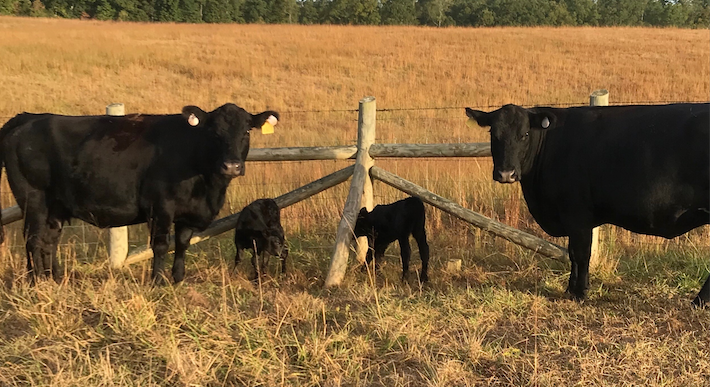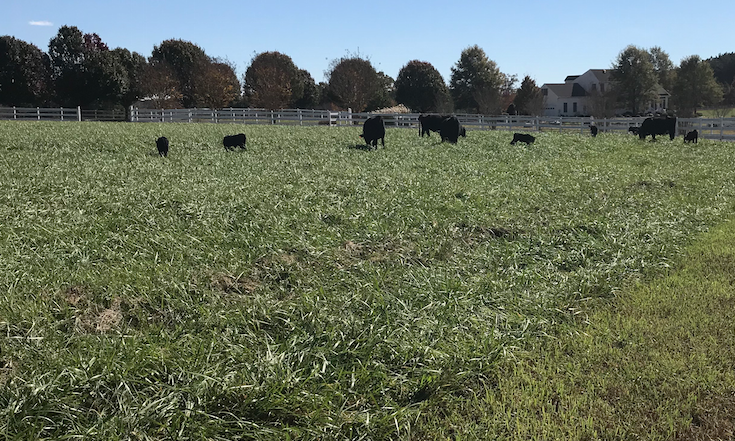Drought impacts farmers, crops
Published 1:52 pm Wednesday, October 23, 2019
|
Getting your Trinity Audio player ready...
|
Virginia Gov. Ralph Northam announced a statewide drought watch advisory Oct. 11. Meanwhile, in spite of recent rains Lunenburg County farmers and crops are hurting after a dramatically-dry start to the fall season.
Stuart Bayne, District Conservationist with the Natural Resources Conservation Service for Lunenburg and Charlotte counties, explained that the USDA County Emergency Board met on Oct. 16 to complete an assessment on crop losses for the counties.
The board, consisting of professionals from Farm Service Agency, Natural Resources Conservation Service, Virginia Cooperative Extension, Southside SWCD and Virginia Department of Forestry, works mainly to report crop losses due to natural disasters to the State Emergency Board with USDA. The State board can then request secretarial and/or presidential disaster declaration.
According to the board’s findings, this season Lunenburg County has experienced an estimated 30% pasture loss and 20% loss of tobacco crop. Additionally, the county saw a 50% mixed grass hay loss and a 30% loss in soybean crops.
Despite drought conditions, Kenbridge Town Councilman and Water Treatment Plant Supervisor Danny Thompson stated that the town’s water supplies are in great condition.
“Our water supply is great,” said Thompson. “We actually pump from Flatrock Creek into our reservoir, and anytime there was a significant amount of water going over the dam, we would certainly turn the pump on and pump into our reservoir. Our reservoir is like 37 or 39 million gallons, and I would say right now it’s probably 33 million, so we’re in good shape.”
Victoria Town Manager Rodney Newton said that Victoria’s water supplies are also looking good. “Ours is fine as well,” Newton stated.
Despite the county’s sufficient water supplies, farmers across the county have experienced trouble due to the lack of rainfall, including Ellie Arroyo, owner of Pine Ridge Farm in Victoria.
Arroyo stated in an interview with The K-V Dispatch, “The drought of course has affected the pastures and the second cutting of hay that we would have done.”
Arroyo stated that her family has three wells on their property to supply water to their cattle, and that she had been very concerned about the water table. Arroyo has been conserving water anywhere possible in order to combat the drought’s effects, including limiting her use of the home’s washing machine and dishwasher.
“There is no second cutting,” Arroyo said in reference to the farm’s hay supplies, “And fescue normally grows at this time, but it needs water and we haven’t had any. We normally feed hay in the middle of December to the end of December, and we’re getting ready now to give hay.”
“And without the second cutting,” Arroyo added, “I’m sure what will happen is farmers will run out of hay and then hay will be a premium to buy.”
Arroyo and her husband have owned the property for over 40 years. She and her husband retired from Washington D.C., where Arroyo had a private industry job and her husband worked with the government. “16 years ago we bought the farm and got cattle. We retired to do this.”
Arroyo stated during her Oct. 17 interview that, since August, the farm had only seen 0.9 inches of rain. A much-needed series of showers over the weekend saw that number rise all the way to 5.67 inches, according to the National Weather Service.
That necessary rain may have come too late for many farmers, according to the County Emergency Board.
“We are very worried about pasture and hay supplies being low with some producers feeding supplemental hay starting in early August,” Stuart stated in the drought report. “Most of the pastures are completely dormant and there is no chance to stockpile grass this year even if we do receive rain.”





